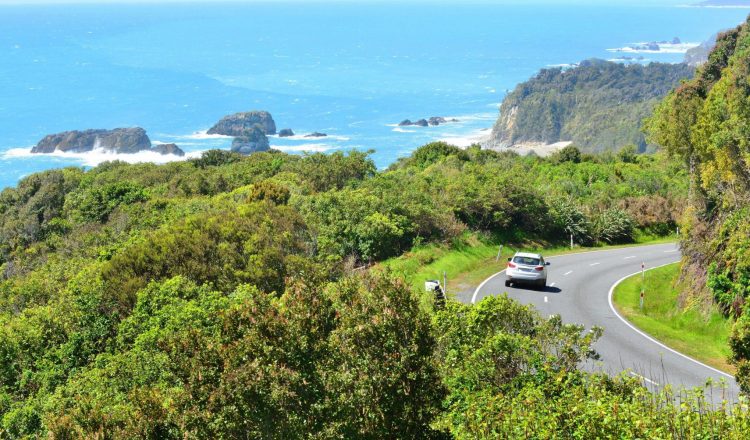Winter driving
The following winter driving tips will help you prepare for and drive to the conditions when driving on icy, wet or snowbound roads.
What do I need to consider?
- Be prepared for safe winter driving by planning your journey.
- Check traffic and travel updates on journey planner(external link) before you leave, or phone 0800 44 44 49.
- Think about where you’re going and what route you should take – choose safety over convenience.
- Consider if you really need to travel, especially if the weather is poor.
- Always check the weather forecast.
If the weather is bad and your travel can’t be put off, allow extra time for your journey. Plan to drive in the middle of the day or in daylight hours, when visibility is better and ice and snow are less likely to be on the road. Avoid driving at night, when hazards rapidly multiply.
If travelling long distances, make sure you are well rested and plan where to have a break. Share the driving if possible or allow for stops every two hours.
If you’re travelling through alpine and higher altitude highways, dress for the conditions, carry warm clothes and keep a survival kit in your vehicle in case you get stuck. Ensure your car is roadworthy and keep at least half a tank of petrol in your vehicle in case you get diverted onto another route.
Be prepared for snow and carry tyre chains that you know how to use and fit. Here’s a video on how to fit chains (external link)
What should I do on the road?
- Drive slower than you normally would – it only takes a split second to lose control in wet or icy conditions.
- Avoid sudden braking or turning movements that could cause you to skid.
- Accelerate smoothly and brake gently.
- Use your highest gear when travelling uphill and your lowest downhill.
- For vehicles without anti-skid braking systems, to avoid skidding or sliding pump the brake pedal in short rapid bursts rather than pressing long and hard.
- Drive at a safe travelling distance because it takes longer to stop on slippery roads. In winter, especially in poor weather, double the two-second rule and leave a safe distance between you and the car you’re following.
- When travelling in fog, rain or snow, drive with your lights dipped for increased safety.
Am I safer in a 4WD?
While 4WDs do have better forward traction and provide good grip, your ability to drive in adverse weather, drive to the conditions, and follow the winter driving tips above still apply to all vehicles.
What about ice and snow?
- Take care in shaded areas caused by high banks and tall trees where roads freeze sooner and ice may not thaw during the day.
- Bridges may also stay slippery for longer than other road surfaces, so slow down when crossing them.
- Frost is more severe at daybreak, so be prepared for this. While it may not be frosty at 6am, it could be an hour or two later.
Watch out for maintenance vehicles
There could be winter maintenance vehicles on the highway helping to keep the road open. If you come across any of these vehicles, stay a safe distance behind them and do not pass unless you’re instructed to.
Our winter maintenance crews constantly update highway conditions as closures occur and conditions change. They have the most up-to-date information and experienced knowledge of their region, so please follow their instructions and advice at all times.
Is information available when I’m travelling?
Electronic message signs are available at roadsides across the country, providing up-to-date warnings to drivers on current conditions.
These may warn of road closures, ice, snow or other related information. The messages on these signs are changed remotely and will be blank when there are no restrictions.
Many radio broadcasts will also provide road condition bulletins, so listen to your local station for updates.
Anti-icing material spread on roads
Grit and an anti-icing agent called CMA is spread or sprayed on some roads to help travel in icy conditions. This isn’t a guarantee you can drive at normal speeds so please keep your speed down.
If there is grit on the highway, drive on it where possible and not in a wheel track to maximise its effect.
Remember to drive to the conditions. The speed at which ice and snow can occur means that there will be times when grit and CMA have not yet been spread.
Always remember
- Drive to the conditions.
- Allow greater following distances on frosty and wet days.
- Be prepared for any delays – dress for the conditions, have warm blankets, bottled water and emergency rations in your vehicle.
- Obey emergency road closed signs and barriers.
- Follow the directions of any road patrol or police officer.
- Avoid towing in icy conditions.
- Road closures and restrictions are put in place for the safety of road users like you and the staff who work on them. It is against the law to drive on a closed highway. If you choose to ignore closures or restrictions, you do so at your own risk and it voids your insurance.
If things go wrong
- In the event of an emergency, dial 111.
- For mechanical breakdowns, contact your breakdown service provider.
- If you want to report or check current road conditions on the state highway
- call 0800 4 HIGHWAYS (0800 44 44 49)
- check online at www.journeys.nzta.govt.nz(external link)
- If you do get stuck, stay with the vehicle and keep everyone warm until help arrives.
- If you are involved in a crash, tell the police even if no one is injured. This type of information helps us to make improvements to the road where necessary.

















































